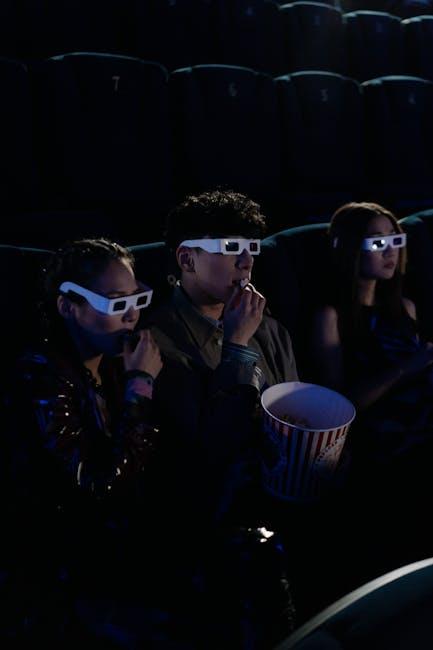In recent years, the film industry has witnessed a marked increase in the production of remakes and reboots, sparking a widespread debate about the creative direction of modern cinema. This trend raises critical questions about the industry’s reliance on familiar narratives and established franchises as a strategy to captivate audiences and ensure box office success. While some argue that this focus on reviving classic stories caters to nostalgic audiences and guarantees financial returns, others express concern that it stifles originality and innovation in filmmaking. This article aims to explore the various factors driving the prevalence of remakes and reboots, examining their impact on the industry’s creative landscape and considering whether this approach ultimately benefits or hinders the evolution of cinematic art. Through a balanced analysis of industry trends, audience reception, and financial imperatives, we seek to understand if the current focus on retelling familiar tales is a prudent path forward or a missed opportunity for fresh storytelling.
Analyzing the Prevalence of Remakes and Reboots in Modern Cinema
In recent years, the film industry has witnessed a significant surge in the production of remakes and reboots, sparking discussions on their prevalence and impact on cinema. This trend can be attributed to several factors that make such projects attractive to studios and filmmakers. Financial security is a primary driver, as established franchises come with a built-in audience, reducing the risk associated with original content. Moreover, the rapid advancements in technology offer filmmakers the tools to reimagine classic stories with enhanced visual effects, making them more appealing to contemporary audiences.
Despite the commercial allure, the cultural implications of this trend are complex. Some argue that the focus on reimagining past successes stifles creativity, limiting the diversity of narratives and voices in mainstream cinema. Others, however, suggest that reboots and remakes provide opportunities to modernize outdated themes and introduce them to new generations. The key considerations in this debate include:
- Cultural nostalgia: Leveraging the emotional connection audiences have with original films.
- Innovation vs. repetition: Balancing fresh perspectives with familiar stories.
- Audience expectations: Navigating the challenge of satisfying both new viewers and long-time fans.

Evaluating the Economic and Creative Impacts of Film Industry Trends
The film industry is witnessing a significant shift towards remakes and reboots, raising questions about their economic and creative ramifications. On the economic front, these projects are often seen as safer investments. Studios capitalize on pre-existing fan bases, leading to a potential for high box office returns. This trend is supported by the familiarity and nostalgia associated with well-known titles, which can reduce marketing costs and increase audience engagement. However, this focus can also lead to market saturation, where too many similar projects compete for attention, potentially diluting their individual impact.
Creatively, the emphasis on remakes and reboots can be both a boon and a bane. Advantages include:
- Opportunities for fresh perspectives on classic stories.
- Technological advancements enhancing the visual storytelling experience.
However, there are also notable downsides:
- A risk of stifling original content and innovative storytelling.
- The possibility of alienating fans if the new versions fail to honor the essence of the originals.
Balancing these economic incentives with creative risks is essential for the industry to thrive and maintain a diverse cinematic landscape.

Understanding Audience Reception and Demand for Original Content
In today’s cinematic landscape, understanding how audiences perceive and demand original content versus remakes and reboots is crucial for film industry stakeholders. Audience reception often hinges on several factors, including nostalgia, innovation, and the cultural relevance of the storyline. Nostalgia can drive viewers to theaters, offering a sense of comfort and familiarity, while innovation in storytelling and technology can captivate audiences seeking fresh experiences. However, the demand for original content is also influenced by the desire for new narratives that reflect contemporary issues and diverse perspectives.
- Nostalgia vs. Novelty: Remakes often bank on the emotional connection of previous versions, but they risk redundancy without fresh takes.
- Cultural Relevance: Original content can offer timely narratives that resonate with current societal trends, attracting audiences looking for reflection and representation.
- Market Saturation: A high volume of remakes can lead to fatigue, urging a call for unique storytelling.
By analyzing audience preferences and viewing trends, the film industry can strike a balance, ensuring that both remakes and original films contribute to a vibrant cinematic experience.
Strategies for Balancing Nostalgia with Innovation in Filmmaking
In today’s cinematic landscape, the challenge lies in harmonizing the sentimental allure of nostalgia with the fresh perspective of innovation. Filmmakers can achieve this balance through a few strategic approaches:
- Reimagining Classics: Instead of direct remakes, filmmakers can explore new angles or untold stories within established universes. This approach respects the original material while offering something novel to audiences.
- Integrating Modern Technology: Employing cutting-edge visual effects or interactive storytelling techniques can breathe new life into beloved stories, making them relevant for contemporary viewers.
- Diverse Storytelling: Introducing diverse voices and perspectives in reboots can revitalize familiar narratives, providing a fresh take that resonates with a broader audience.
By thoughtfully blending these elements, filmmakers can craft works that honor the past while paving the way for future innovations, ensuring that the industry remains both respectful of its roots and eager to explore new creative horizons.







































